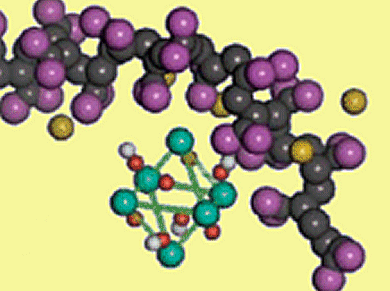Hybrid Materials
Organic–inorganic hybrid materials, uniting the advantages of their organic and inorganic parts, are used for a wide variety of applications. However, making a homogeneous composite material is only possible if a solvent can be found in which both components are soluble. Materials containing the metal bismuth show high radiopacity, and thus they have potential as X-ray imaging agents for computer tomography and as X-ray contrast additives in bone and dental cements, for example, to examine how well the cements fit after they are placed in the appropriate body part by an operation. However, a major disadvantage associated with the low solubility of these inorganic bismuth compounds is phase separation due to their incompatibility with the organic matrix. Michael Mehring at the Technical University of Chemnitz and Dirk Zahn at the Friedrich Alexander University in Erlangen-Nürnberg report the investigations of their groups on highly soluble bismuth oxido clusters in the European Journal of Inorganic Chemistry.
Water-Soluble
Water-soluble hexanuclear bismuth oxido clusters ([Bi6O4(OH)4]6+) were mixed with a polyacrylate organic component, which is a dispersing agent used in phosphate-free laundry detergents, to obtain a water-soluble hybrid composite material that has the potential to be used in applications such as bone cement. The solubility of the bismuth oxido cluster ensures a good dispersity in the polymer matrix. Molecular dynamics simulations were used to demonstrate the complexation behavior of this water-soluble bismuth oxido cluster towards polyacrylate. The cluster degenerates from an octahedral to a tetrahedral motif as polyacrylate chains are wrapped around it to form a stable structure. The melting point of the composite material is lower than that of the pure polyacrylate matrix.
It is the unusual water solubility of the bismuth oxido cluster investigated that makes possible the synthesis of this hybrid material, a water-soluble transparent solid with a narrow size distribution, which is potentially applicable as bone cement.
- A Novel Water-Soluble Hexanuclear Bismuth Oxido Cluster – Synthesis, Structure and Complexation with Polyacrylate
L. Miersch, T. Rüffer, H. Lang, S. Schulze, M. Hietschold, D. Zahn, M. Mehring,
Eur. J. Inorg. Chem. 2010, 30, 4763–4769.
DOI: 10.1002/ejic.201000753




